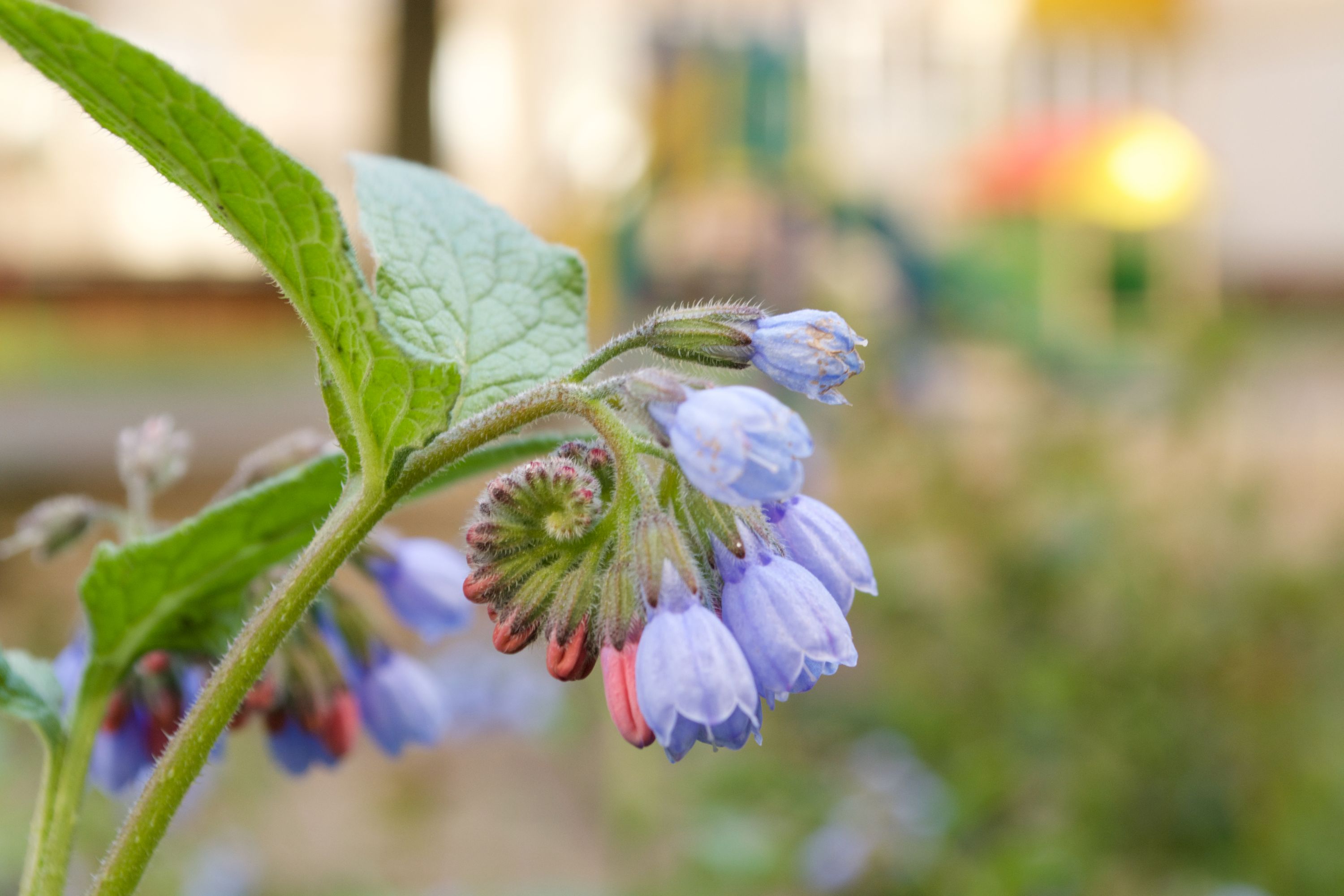Virginia bluebells
(Mertensia virginica)

Description
Mertensia virginica (common names Virginia bluebells, Virginia cowslip, lungwort oysterleaf, Roanoke bells) is a spring ephemeral plant with bell-shaped sky-blue flowers, native to eastern North America. Virginia bluebells have rounded and gray-green leaves, borne on stems up to 24 in (60 cm) tall. They are petiolate at the bottom of the flower stem and sessile at the top. Flowerbuds are pink. Flowers have five petals fused into a tube, five stamens, and a central pistil (carpel). They are borne in mid-spring in nodding spiral-shaped cymes at the end of arched stems. Flowers are usually blue, but white or pink flowers occur rarely. The stamens and stigma are spaced too far apart for self-fertilization. The flower can be pollinated by bumblebees but, due to its funnel shape bumblebees must hover, making the bumblebee a rare pollinator. Butterflies are the most common pollinators because they can easily perch on the edges and still enjoy the nectar. In early summer, each fertilized flower produces four seeds within wrinkled nuts, and the plant goes dormant till the next spring. Plants are hardy to hardiness zone 3: −40 °C (−40 °F). In cultivation, M. virginica has gained the Royal Horticultural Society's Award of Garden Merit. Virginia bluebells had several uses in traditional Native American medicine, including as a pulmonary aid, tuberculosis treatment, and treatment for whooping cough (Cherokee,) root infusion antidote for treating poison, and root decoction venereal to treat venereal issues (Iroquois.). Native Americans believed a tonic made from this plant could help heal those who were under-the-weather. According to St. Olaf College in Minnesota, uses of Virginia bluebells have been studied but offer no scientific proof that this plant can be used for medicinal purposes. Mertensia virginica is edible, including the flowers. Mertensia is a genus of flowering plants in the family Boraginaceae. They are perennial herbaceous plants with blue or sometimes white flowers that open from pink-tinged buds. Such a change in flower color is common in Boraginaceae and is caused by an increase of pH in the flower tissue. Mertensia is one of several plants that are commonly called "bluebell". In spite of their common name, the flowers are usually salverform (trumpet-shaped) rather than campanulate (bell-shaped).
Taxonomic tree:







